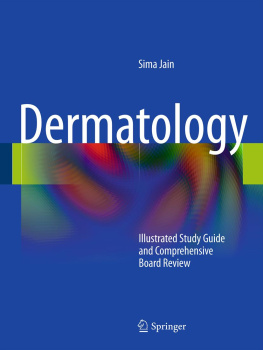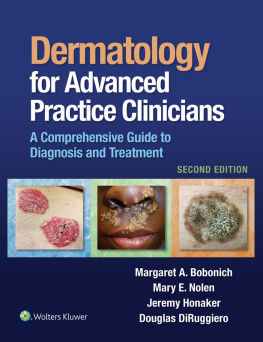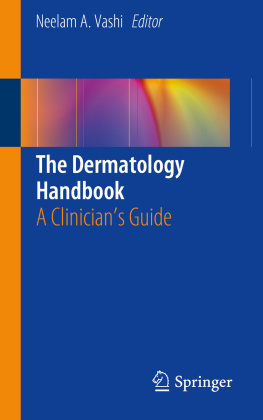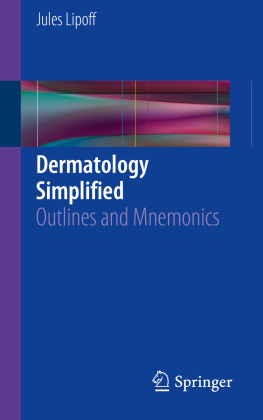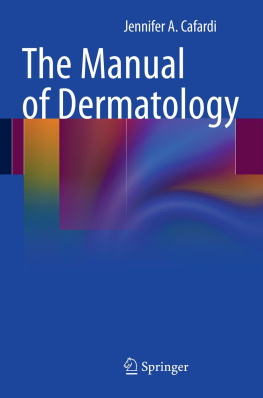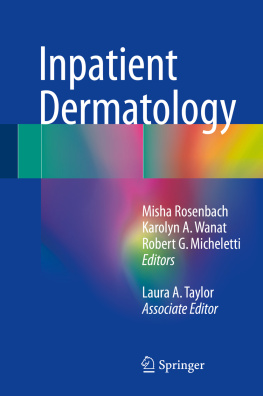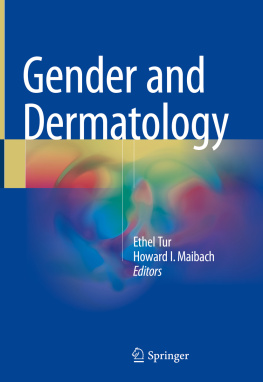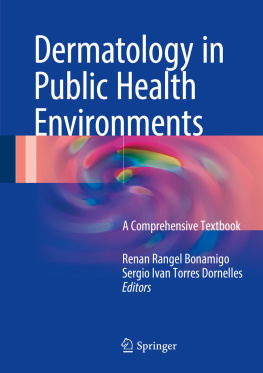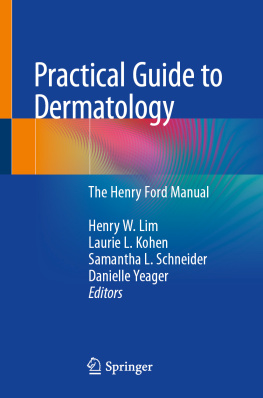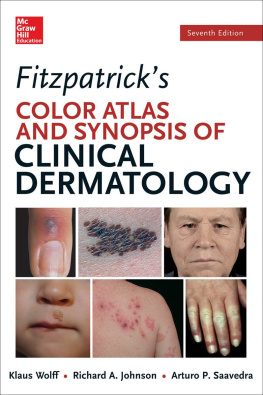Sima Jain Dermatology 2012 Illustrated Study Guide and Comprehensive Board Review 10.1007/978-1-4419-0525-3_1 Springer Science+Business Media, LLC 2011
1. Basic Science and Immunology
Sima Jain 1, 2
(1)
College of Medicine Private Practice, Assistant Clinical Professor of Dermatology University of Illinois at Chicago, West Dundee, IL, USA
1.1
1.2
1.3
1.4
1.5
1.6
1.7
1.8
1.9
1.10
1.11
Abstract
Functions as a mechanical and antimicrobial barrier; protects against water loss and provides immunological protection; thickness varies from 0.04 mm (eyelid skin) to 1.5 mm (palmoplantar skin).
1.1 EMBRYOLOGY
Table 1-1
Developm ent of Cutaneous Structures
Gestational Age (Estimated) | Epidermal Development | Hair, Nail, and Gland Development | Dermal/Subcutaneous Development |
|---|
First trimester |
34 weeks | Single layer of ectoderm |
6 weeks | Outer flattened periderm and inner, cuboidal germinal (basal) layer | Germinal layer in contact w/ underlying mesenchyme |
7 weeks | Fetal basement membrane | Tooth primordia |
812 weeks | Epidermal stratification begins 8 week | Dermal-subcutaneous boundary distinct |
Appearance of |
Melanocytes |
Langherhans cells |
Merkel cells |
912 weeks | Appearance of anchoring filaments/hemidesmosomes | Hair follicle and nail primordia seen |
Second trimester |
12 weeks | Formation of dermo-epidermal junction (DEJ) | Nail bed starts to keratinize, proximal nail fold forms | Type III collagen appears |
1214 weeks | Parallel ectodermal ridges (fingerprints) | Eccrine and sebaceous gland primordia seen | Fibroblasts actively synthesizing collagen and elastin in dermis |
1224 weeks | Melanin production (1216 weeks), melanosome transfer (20 weeks) | Hair follicles differentiate during second trimester (seven concentric layers present) |
1520 weeks | Follicular keratinization, nail plate completely covers nail bed | Papillary/reticular boundary distinct, dermal ridges appear |
22 weeks | Trunk eccrine gland primordia | Elastic fiber seen |
2224 weeks | Mature epidermis complete (w/ interfollicular keratinization ) | Adipocytes appear under dermis |
1.2
Germinal layer produces entire epidermis
Completed by second trimester
1.3 Epidermis
Functions as a mechanical and antimicrobial barrier; protects against water loss and provides immunological protection; thickness varies from 0.04 mm (eyelid skin) to 1.5 mm (palmoplantar skin)
Divided into four layers (each with characteristic cell shape and intracellular proteins): stratum corneum, stratum granulosum, stratum spinosum, and stratum basale (germinativum); of note, stratum lucidum is additional layer in palmoplantar skin
Keratinocytes
Ectodermal derivation : keratinocytes comprise approximately 8085% of epidermal cells
Total epidermal turnover time: average 4560 days (3050 days from stratum basale to stratum corneum and approximately 14 days from stratum corneum to desquamation)
Epidermal self-renewal maintained via stem cells in basal layer of interfollicular epithelium and the bulg e region of hair follicles (latter location only activated with epidermal injury)
Keratinocytes produce keratin filaments (syn: intermediate filaments or tonofilaments), which form the cells cytoskeletal network; this provides resilience, structural integrity, along with serving as a marker for differentiation (i.e., basal layer: K5/14)
Six different types of keratin filaments: type I/II are epithelial/hair keratins, type IIIVI include desmin, vimentin, neurofilaments, nuclear lamins, and nestin
>50 different epithelial/hair keratins, expressed as either type I (acidic) or type II (basic), and type I/II coexpressed together as a heterodimer (i.e., K5/14)
Type I (acidic) epithelial keratins: K928, chromosome 17
Type I (acidic) hair keratins: K3140 (old nomenclature: hHa1-hHa8, Ka35, Ka36)
Type II (basic) epithelial keratins: K18 and K7180, chromosome 12
Type II (basic) hair keratins: K8186 ( old nomenclature: hHb1hHb6 )
Table 1-2
Keratin Filament Expression Pattern
Type II | Type I | Location of Expression | Associated Diseases |
|---|
| | Suprabasal keratinocytes | Epidermolytic hyperkeratosis (EHK), Unna-Thost palmoplantar keratoderma (PPK) |
| | Palmoplantar suprabasal keratinocytes | Vorner PPK |
2 ( 2e ) | | Granular and upper spinous layer | Ichthyosis bullosa of Siemens |
| | Cornea | Meesman corneal dystrophy |
| | Mucosal epithelium | White sponge nevus |
| | Basal keratinocytes | Epidermal bullosa simplex (EBS), Dowling-Degos disease |
6a | | Outer root sheath | Pachyonychia congenita I |
6b | | Nail bed | Pachyonychia congenita II |
| | Simple epithelium | Cryptogenic cirrhosis |
K81 K86 | Hair | Monilethrix |
| Stem cells |
Of note, second cytoskeletal network formed by actin filaments
Do not confuse with Dowling-Degos with Degos disease
Dowling-Degos: AD, reticulated pigmentation over skin folds
Degos disease (malignant atrophic papulosis): occlusion + tissue infarction
Stratum Basale (Germinativum)
Basal layer just above basement membrane; contains keratinocytes, melanocytes, merkel cells , and Langerhans cells (latter mainly in stratum spinosum)
10% of cells in basal layer are stem cells
Expression of ornithine decarboxylase (ODC), which is a marker for proliferative activity (ODC stimulated by UVB and partially blocked by retinoic acid/corticosteroid/vitamin D3)

